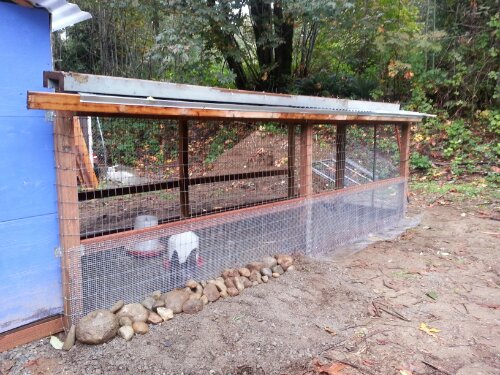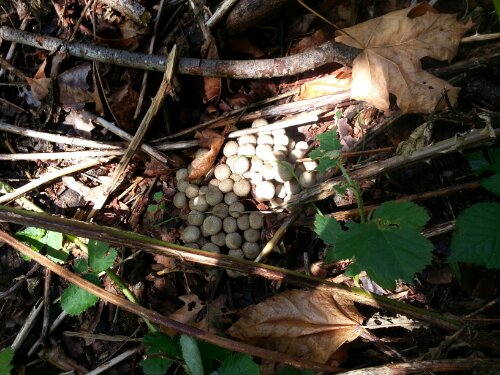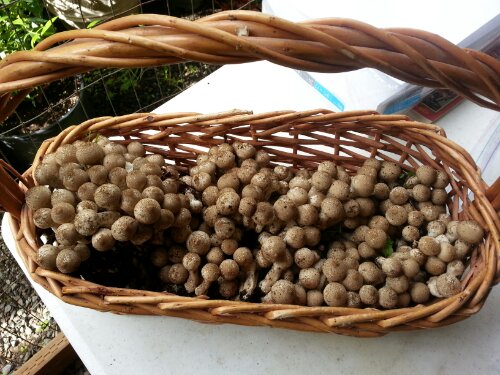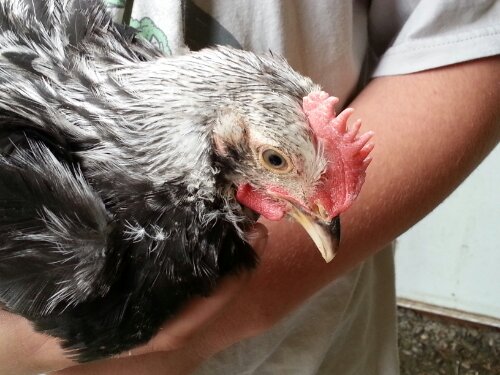So, on the weekend we had planned to make the final push to finish our chicken coop, the weather decided to stop cooperating. Not one, but two storm cells gathered off the coast and decided to join forces to make outside working conditions moderately miserable. In fact, this first picture (above) was taken from inside the coop’s secured covered run while we waited out a particularly heavy spot of rain.
Slightly visible in the picture above are actual puddles of water out in the larger garden area (remarkable because we have excellent drainage in this area, but it still couldn’t quite keep up with what was coming down…)
However, in spite of the very wet weather, we managed to get the coop secured enough to move the pullets from their temporary coop into their newly refurbished and seriously enhanced new home. They were very happy.
The last major step in finishing Fort Chook’s defenses was to install the anti-grab and anti-dig hardware cloth “apron” along the bottom edges of the secured run. We worked on that on Sunday.
Then we covered the portion of the screening along the trenched bottom edge with about 6 inches of gravel.
And then put small boulders and fist-size or larger rocks along the top edge to further discourage digging.
I was only able to get one section of the coop “rocked” but I will be gathering more rocks this week as time permits to finish the rest. We have no shortage of rocks here.
And here we have Fort Chook, about 90 percent finished. Most of what is left to do is inside the coop itself – roosts, nesting boxes, etc. With luck, Ft. Chook should keep our birds cozy and safe for a long time to come.

















